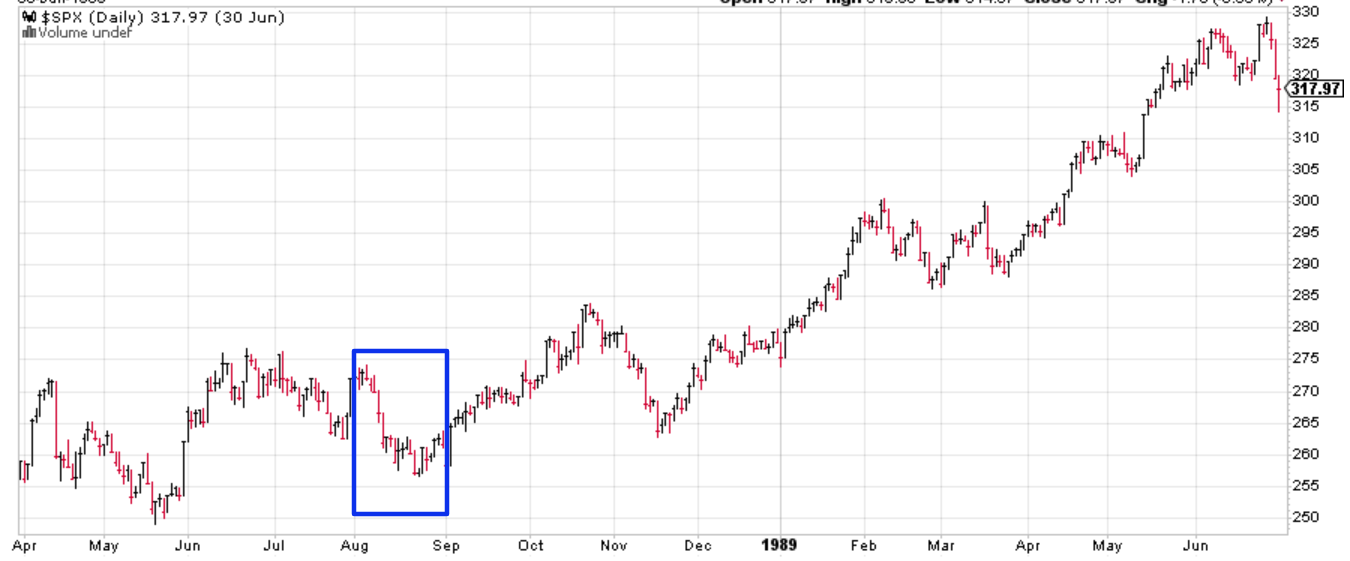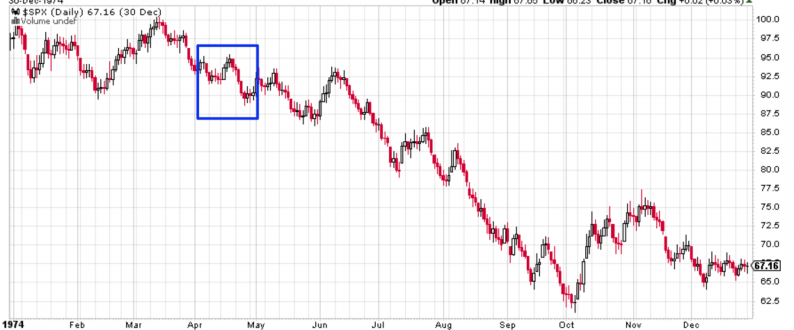The stock market and economy move in sync over the long run. When the stock market deviates from the economy, it inevitably realigns itself with the economy’s direction within a few months.
The U.S. stock market’s correction in February 2018 was accompanied by a growing economy. This implies that the current “small correction” will not turn into a “significant correction” or bear market. Here’s the study: what happens when…
This happened in:
All of these cases (except April 1974) saw the S&P 500 rally over the next 2-3 months. This is a medium-term bullish sign for the stock market.
Let’s look at these cases in detail.
April 1974
The stock market tanked for the next half year. This was a bear market and recession. This historical case does not apply to today because the U.S. economy by a growing economy.

October 1979
The stock market surged over the next 3 months. The S&P 500’s next “significant correction” began more than 3 months later in February 1980.

August 1988
The S&P went up over the next 2 months. It made a 7.4% “small correction” 2 months later, but the next “significant correction” was 2 years away in mid-1990.

March 1994
This was the bottom of the S&P 500’s “significant correction”. It slowly swung higher in 1994 in a wide range before soaring in 1995.

November 1994
This was the last pullback in 1994 before the U.S. stock market soared in 1995.

July 1996
This was the bottom of the S&P 500’s 11% “small correction”. The S&P 500 rallied nonstop over the next 6 months. The next “small correction” was 6 months away in February 1997.













Leave A Comment